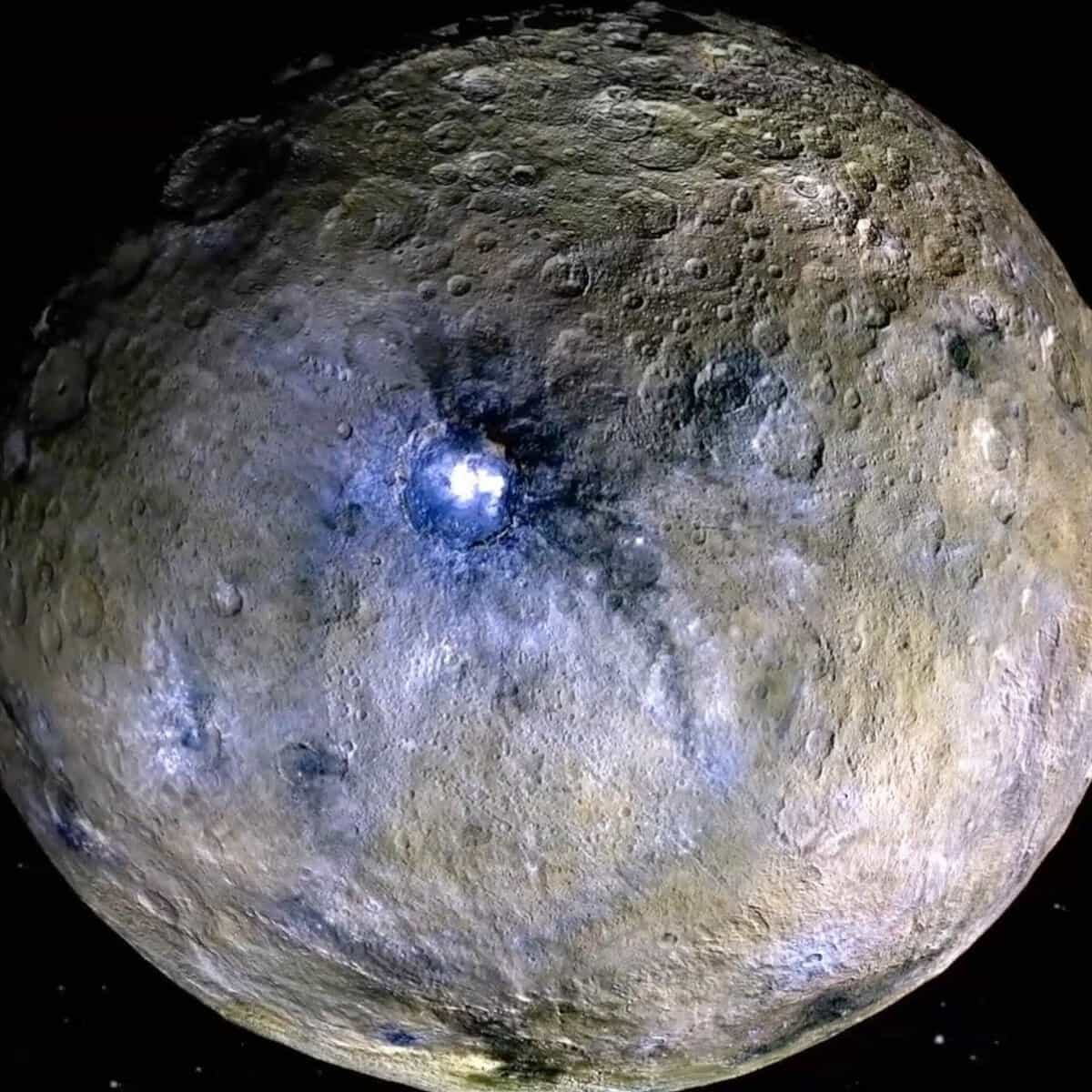
Ceres, which has been a topic of debate among astronomers, is a dwarf planet. It was first detected at an observatory in Italy in 1801. The name of this celestial entity was given in tribute to the goddess of agriculture and fertility in ancient Rome.
General information
After being discovered, the celestial body known as Ceres was initially classified as a planet. However, it was later reclassified as an asteroid. In 2006, scientists once again revised their decision and designated Ceres as a dwarf planet. Ceres has a diameter of 950 kilometers, making it significantly larger than other bodies in the asteroid belt.
It is worth noting that Ceres, unlike most asteroids, has a spherical shape. This distinguishes it from asteroids, which often have irregular shapes. The object has a brightness level of 9.3, which is not sufficient for naked-eye observation. A telescope is necessary to study it.
Ceres’ path around the Sun
Ceres’ orbit can be found within the solar system, positioned between Mars and Jupiter. The path it follows is slightly elliptical in shape. It takes Ceres approximately 4.6 years to complete one full revolution around the Sun. In terms of distance, Ceres is located about 252 million kilometers away from the surface of Earth. Unlike Earth, Ceres has significantly shorter days, lasting only 9 hours and 4 minutes.
In the early 21st century, scientists from Paris discovered that Ceres’ orbit is not stable. This instability increases the possibility of a collision between Ceres and another celestial body called Vesta. The likelihood of such an event occurring is estimated to be around 0.2 percent. Additionally, Ceres does not possess any permanent satellites with diameters exceeding 20-30 kilometers.
Physical characteristics
The physical attributes of Ceres are quite remarkable. Scientists have determined the mass of the dwarf planet by studying its impact on neighboring asteroids. It is believed that Ceres makes up a staggering 70 percent of the total weight of the entire asteroid belt. The estimated mass of Ceres is approximately 9.4×10 to the 20th degree. In terms of size, Ceres is incredibly small compared to Earth, measuring just 6,000 times smaller. Despite its diminutive size, Ceres has its own gravity, which gives it its distinctive spherical shape. The dimensions of Ceres are 975 by 909 kilometers, making it similar in size to the Krasnoyarsk Krai or Argentina in terms of surface area.
The composition of Ceres
Ceres, the closest dwarf planet to Earth, exhibits a unique and intriguing composition. The gravitational forces at play during its formation have had a significant impact on its structure.
Atmospheric Conditions
Unlike other celestial bodies in the asteroid belt, Ceres possesses a remarkably thin atmosphere. This atmosphere is thought to contain traces of water vapor, which is believed to be a result of ice volcanoes and the sublimation of surface ice. The proximity of Ceres to the Sun likely contributed to the development of its own atmosphere.
Given the presence of water, scientists speculate that there may be the potential for life on Ceres, albeit in the form of microorganisms such as bacteria or protozoa. Another intriguing possibility is that Ceres may have once harbored more complex life forms.
Ceres, the presumably dwarf planet, is composed of approximately 33% ice. Its interior consists of an icy mantle and a rocky core. Research conducted on Ceres’ surface has revealed the presence of craters and cryovolcanoes. These elevations have been named after figures from Roman mythology. One particular crater on Ceres contains a well-known bright spot.
The surface temperature on Ceres is estimated to be around 106 degrees Celsius. Although there is no liquid water on the planet, there are regions of clay that contain liquid substances. The presence of ammonia in the clay remains a mystery. The surface of this dwarf planet, which is nearest to the Sun, undergoes constant changes. Glaciers shift, craters collapse, and mudflows occur periodically. It is worth noting that some craters are referred to as cold traps, as the bottoms of these craters have never been exposed to sunlight.
Origin
Ever since the discovery of Ceres, scientists have been puzzled by its structure. It wasn’t until the 2000s that they started to get a clearer picture. It turns out that the celestial body’s spherical shape is a result of gravitational differentiation in its interior. Over time, the heavier rocks gradually sank towards the center, while the lighter icy layers floated to the surface.
It is believed that the core of Ceres was much hotter in the past. This increase in temperature was caused by radioactive decay at its center. Additionally, the dwarf planet’s mantle was also partially molten. As the temperature cooled down, a gaseous atmosphere formed due to the influence of ultraviolet radiation from the Sun. In the last billion years, the surface of Ceres has been geologically active.
Discovery and exploration
The idea that there might be an astronomical body in this location has been hypothesized since the 17th century. This belief was founded on a mathematical principle that identified a correlation between the radii of other planets that were already discovered. In the early 18th century, a dedicated group of astronomers emerged with the sole purpose of locating the “missing” object. These scientists diligently observed the cosmos day and night.
The utilization of advanced telescopes during that time period enabled the researchers to make the groundbreaking discovery of the dwarf planet Ceres, along with numerous asteroids that were previously unidentified. The individual responsible for this momentous finding was none other than D. Piazzi, who made the observation even prior to joining the research team. Subsequently, the scientist conducted an additional 24 observations of Ceres before falling ill. Following this, he made the decision to share his findings with several colleagues. Unfortunately, at the time of Ceres’ discovery, the researchers were unable to accurately determine its dimensions.
Facts
- Ceres is the nearest dwarf planet to the Sun. There are no other dwarf planets in the solar system that are as close to the central star.
- Ceres has a gravitational acceleration of 0.028 g. This measurement is applicable to the equatorial regions.
- The largest crater on Ceres has a diameter of 81 kilometers. This crater is known as Sereno.
- The dwarf planet differs significantly from larger celestial bodies in the solar system. However, its composition contains the same elements found on Earth.
- Ceres is one of four astronomical bodies with evidence of water activity. This similarity makes the planet comparable to Earth, Saturn’s sixth moon Enceladus, and Jupiter’s moon Europa.
The main characteristics of this celestial object include:
- Its close proximity to the Sun;
- Its classification as a dwarf planet;
- The presence of water vapor in its atmosphere;
- The speculation about the existence of life on the planet.
Ceres, despite its small size, is an incredibly intriguing planet. Similar to Earth and Enceladus, it holds the potential to be a “cradle” for new life. However, this astronomical body’s existence may be in jeopardy. If Ceres were to collide with Vesta, the hopeful predictions of scientists would never come to fruition.
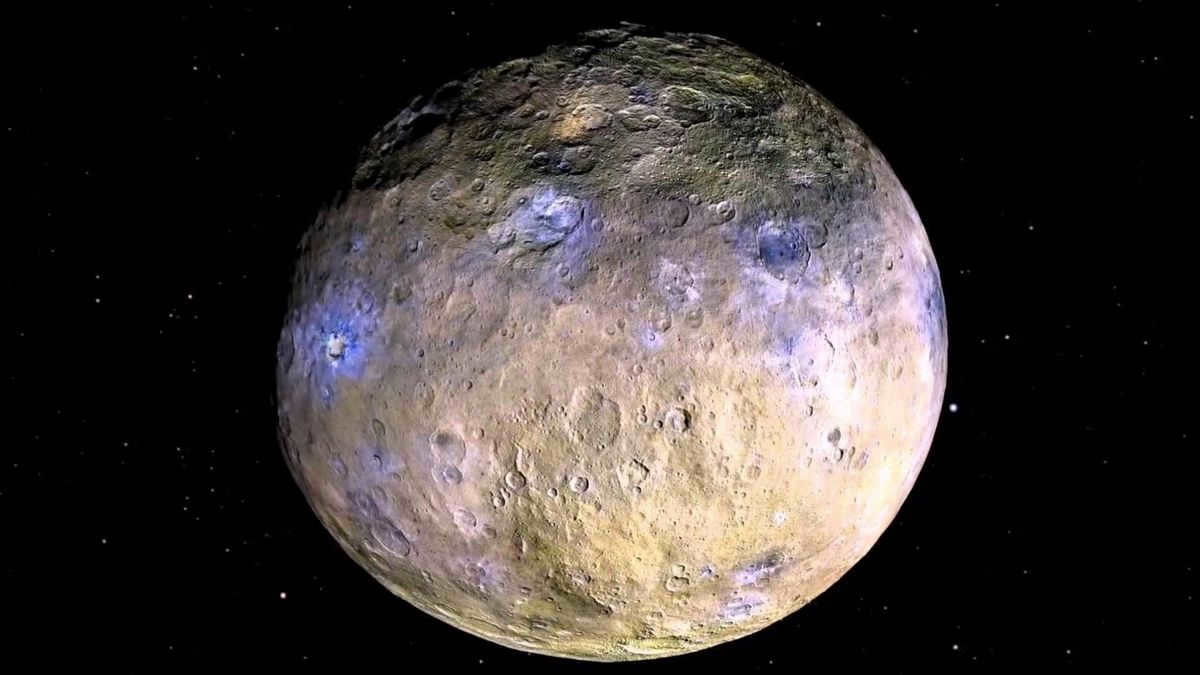
Ceres is the biggest celestial body in the asteroid belt, and it shares the status of a dwarf planet with Pluto, Erida, Haumea, and Makemake. It occupies an orbital position between the orbits of Mars and Jupiter.
Discovery History
Ceres, a celestial body located between the orbits of Jupiter and Mars, was first discovered on January 1, 1801, by Italian philosopher and mathematician Giuseppe Piazzi. While observing the constellation of Taurus through a telescope, Piazzi noticed an unidentified object, which he named Ceres.
Initially identified as a planet, Ceres was later reclassified as an asteroid after the discovery of numerous similar objects in the same orbit during the 1850s. However, in 2006, Ceres was once again reclassified, this time as a dwarf planet.
Within the asteroid belt, there exist other sizable entities like Gaia, Vesta, and Pallada. Ceres sets itself apart from these counterparts with its distinctive and symmetrical spherical structure, a result of its own gravitational influence. Due to its diminutive size and faint luminosity, Ceres remains imperceptible to the unaided eye during nocturnal observations.
History of Formation
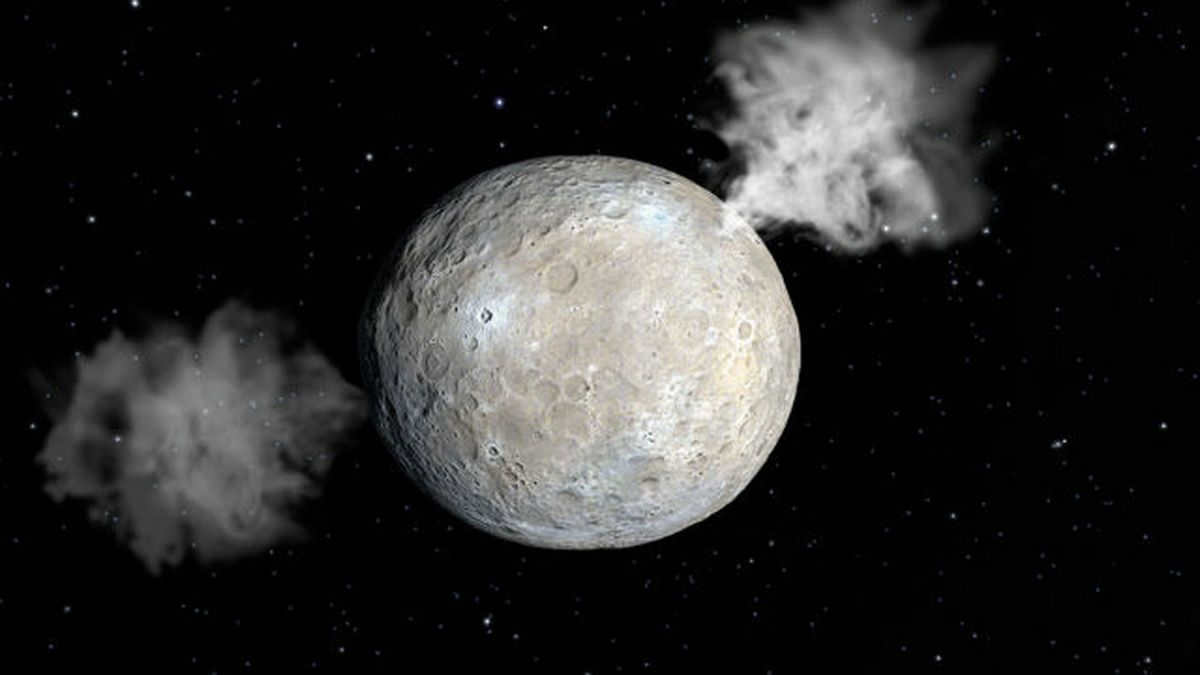
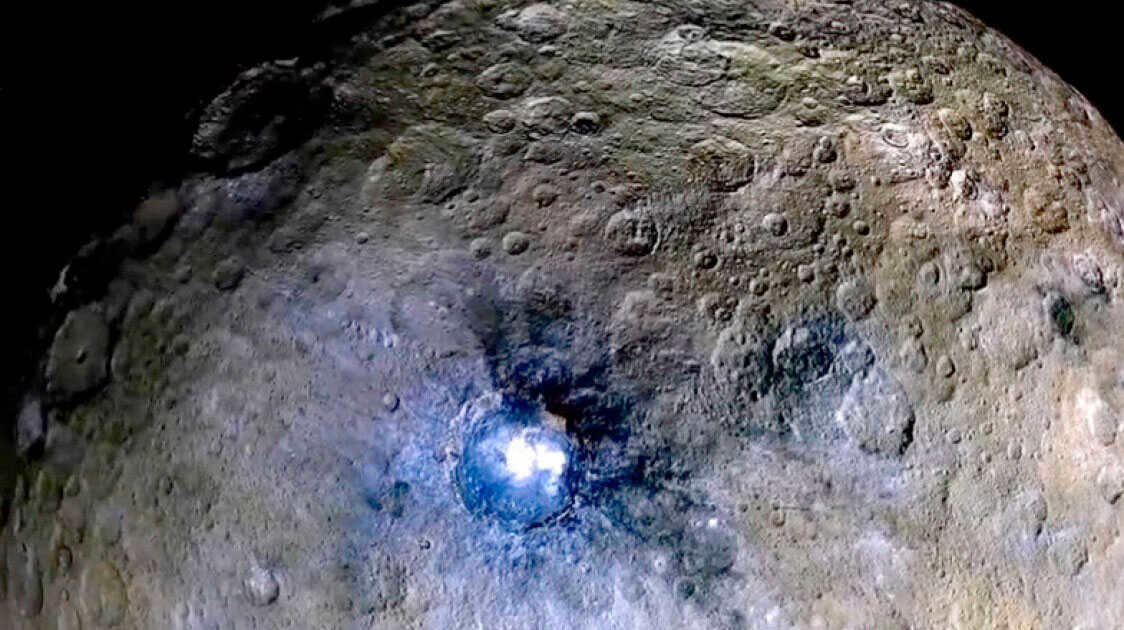
Ceres was formed approximately 4.5 billion years ago during the early stages of the solar system’s formation. The force of gravity brought together particles of dust and gas, transforming them into a compact planet.
However, due to the strong gravitational pull of Jupiter, Ceres was unable to fully develop into a mature planet and remained in its “embryonic” state. Eventually, about 4 million years ago, it settled in the heart of the asteroid belt, alongside other remnants of planetary formation.
Orbit
Rephrase the text, making it unique while keeping the HTML markup:
Orbit
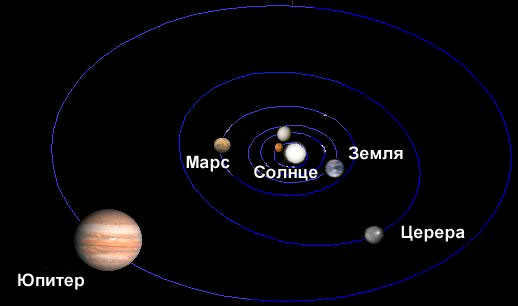

Ceres orbits between Mars and Jupiter at a velocity of 17.9 km/s. The dwarf planet completes one full revolution around the Sun in 1682 days, equivalent to 4.6 Earth years. While Earth has a day that lasts 24 hours, Ceres has a much shorter day, lasting only 9 hours and 4 minutes.
Over the course of 3 million years, the axis of inclination of Ceres has shifted and the planet has experienced periods of seasonal activity due to the gravitational influence of Jupiter and Saturn. However, the planet has not had any observable change of seasons in the last 14 thousand years.
Currently, Ceres has a small inclination angle of 4 degrees and rotates almost vertically, resulting in the absence of distinct seasons.
There is a belief that Ceres is coated in a delicate layer of regolith, concealing the icy mantle and rocky core beneath.
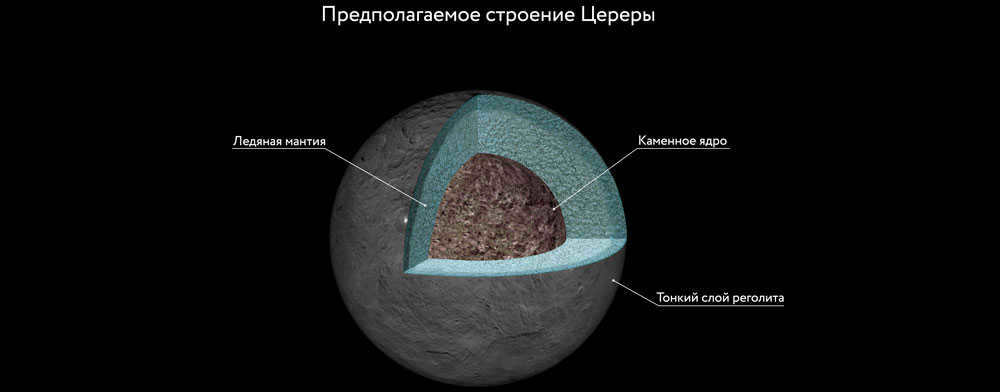

The Internal Composition of Ceres
| Components of the Composition | Characteristics of Components |
| Crust | Made of stone and dust, with a substantial concentration of salt |
| Mantle | Consists of an icy ocean. Contains separate salt lakes, from which brine is released to the surface through cryovolcanoes. |
| Core | Solid and rocky |
The icy covering holds approximately 200 million cubic kilometers of frozen water, which constitutes about 30% of the overall mass of the small planet. The water reserves on Ceres surpass those of Earth’s freshwater reserves and make up around 10% of Earth’s seas and oceans.
Atmosphere
In 2014, scientists discovered traces of water vapor surrounding Ceres, creating an extremely thin and rarefied atmosphere known as the exosphere. It is believed that vapor particles are expelled into the atmosphere through cryovolcanoes or dislodged from the icy surface due to impacts from solar particles.
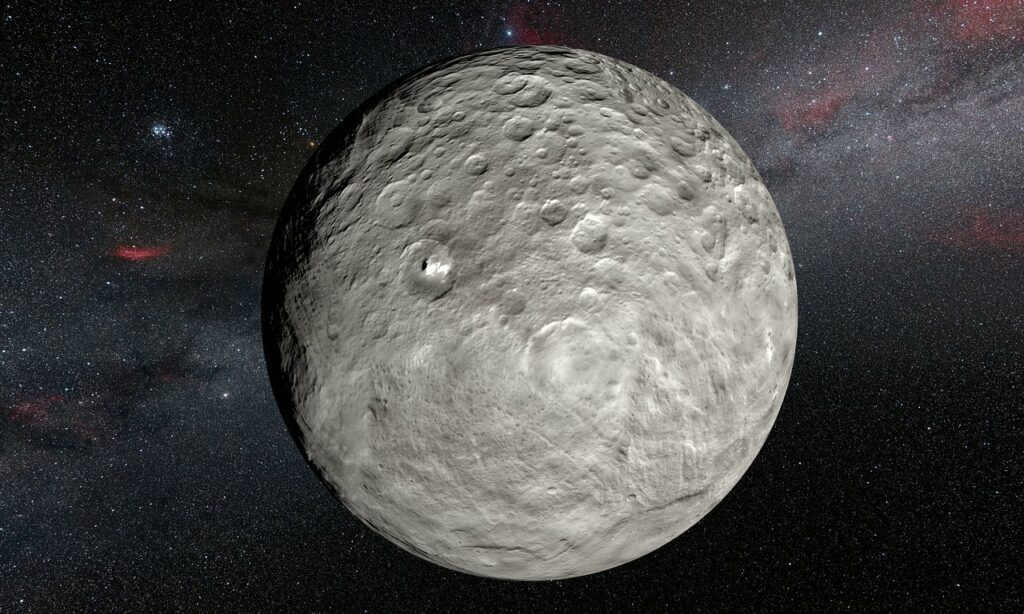
It is important to note that vapor molecules cannot be retained for an extended period of time above a light, weakly gravitating object, and after a few days they escape into space. Therefore, the atmosphere on Ceres is an incredibly dynamic phenomenon, influenced by various periods of solar activity.
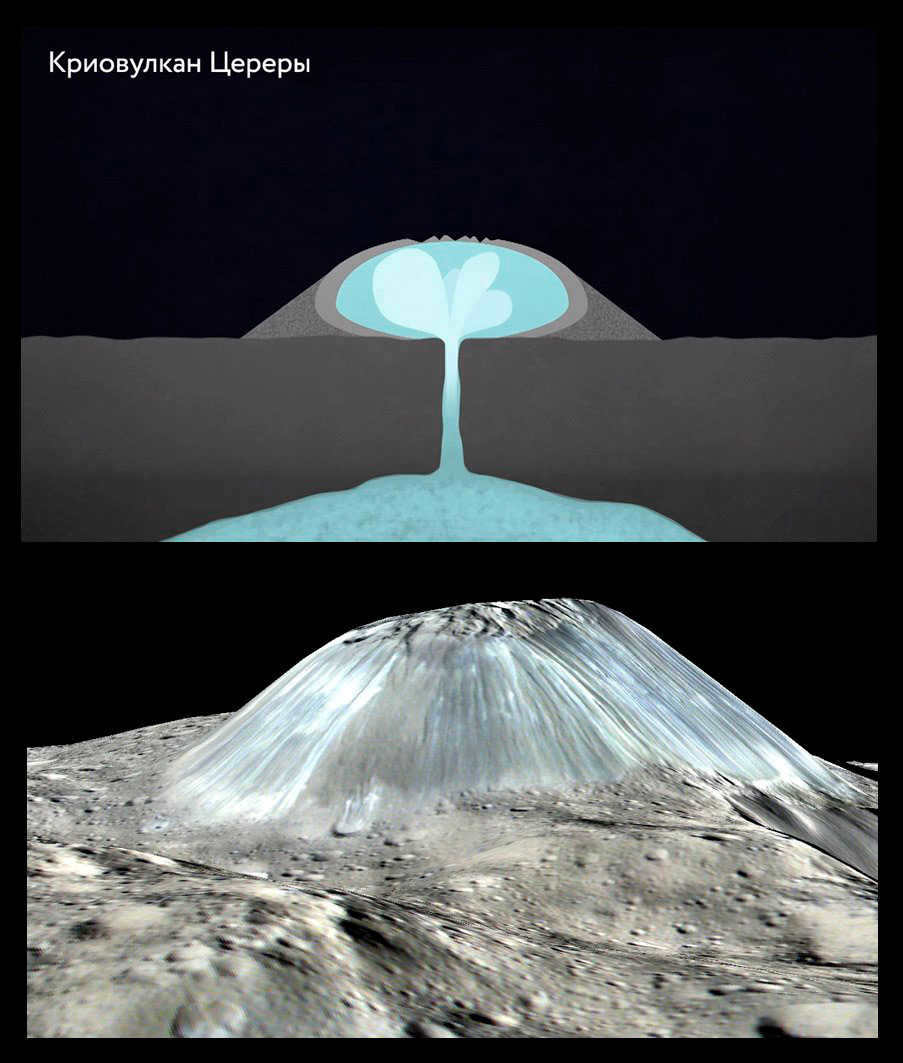

Impact Craters
The surface of Ceres is dotted with small impact craters, but scientists argue that all of them are too small and recent for an ancient dwarf planet. It is reasonable to assume that over the course of 4.5 billion years, the planet’s crust would be adorned with numerous evidence of collisions with large asteroids. So, what is the explanation behind this?
It is plausible that Ceres has the ability to regenerate impact marks, aided by the presence of ice in its subsurface. As a less dense material, it gradually levels out the planet’s surface.
It is possible that some significant impact craters have vanished due to the influence of hydrothermal activity, such as cryovolcanism.
There are certain craters on Ceres that remain in shadow and are never exposed to sunlight. These particular craters are believed to contain water ice that is as old as the solar system itself.
Indications of existence
It is not ruled out by scientists that life could potentially exist on Ceres. However, any living organisms that may be present are likely to be microscopic, similar to bacteria. While Ceres may currently be devoid of life, it could potentially have shown signs of life in the past.
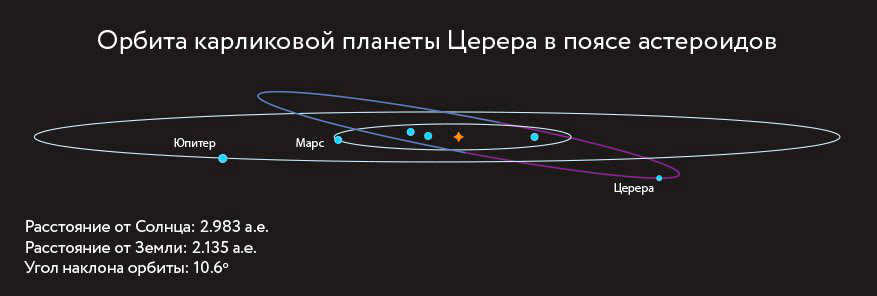

Investigation
Due to its relatively small size, observing Ceres through a telescope has proven to be quite challenging. NASA’s Dawn spacecraft mission has played a crucial role in unraveling the mysteries of this extraordinary celestial body. It successfully reached the dwarf planet in 2015 and, gradually descending over its surface, captured a series of highly detailed images.
Amongst the images, scientists noticed the presence of white deposits within certain craters on Ceres. After careful analysis, it was determined that these deposits were composed of oxygen, carbon, and sodium compounds that had made their way to the planet’s surface in the form of brine. As the liquid evaporated, it left behind a white salt crust that reflected sunlight.
Over the next few years, a new interplanetary station is set to embark on a journey to Ceres in order to provide further insights into the myriad of questions that perplex planet scientists.
Watch the video for an in-depth analysis of the scientific facts
Discovery of the Unknown Planet
The notion of the existence of an unexplored celestial body within the orbital paths of Mars and Jupiter was initially proposed [23]. This hypothesis was formulated based on [23] [30] [31]. The confirmation of this concept came in 1781 when William Herschel stumbled upon Uranus, thereby substantiating the theory. Consequently, the quest to identify a planet situated at a distance of 2.8 [30] [31] commenced, leading to the establishment of a group of 24 astronomers known as the Celestial Guardian in 1800 [30]. Guided by [23] [31], this collective embarked on a mission to locate this elusive celestial body. Although Ceres remained undiscovered, numerous other sizable asteroids were found [31].
Piazzi chronicled the discovery of Ceres in his book “Della scoperta del nuovo pianeta Cerere Ferdinandea”.
Ceres was found at the Palermo Astronomical Observatory on January 1, 1801 by an Italian astronomer [32] who was also invited to join the Celestial Guardian group, but made his discovery prior to receiving the invitation. He was in search of “the 87th star of the Zodiacal Star Catalog [23]. In his search, he stumbled upon another celestial object that he had not accounted for before [33]. Piazzi made a total of 24 observations of Ceres (with the last observations being made on February 11, 1801) until his observations were interrupted by illness [34] [35]. On January 24, 1801, he announced his discovery in letters to two of his colleagues: his fellow countryman Barnaba Oriani of [36]. In these letters, he initially described the object as a comet, but quickly clarified that “due to its slow and rather uniform motion, it has crossed my mind numerous times that it may be something more than just a comet” [23]. In April of the same year, Piazzi sent his most comprehensive observations to the aforementioned colleagues and to Jérôme Lalande in Paris. These observations were published in the September edition of the journal “Monatliche Correspondenz” for 1801.
When the journal was published, the apparent position of Ceres had changed due to the Earth’s orbital motion and other astronomers were unable to confirm Piazzi’s observations because of solar glare. By the end of the year, Ceres became visible again, but its exact position was difficult to determine after such a long time. To specifically determine Ceres’ orbit, Piazzi aimed to find a method using three complete observations (time, direct ascent, and declination at three different points in time). In just a few weeks, he calculated Ceres’ path and sent the results to von Tsach. On December 31, 1801, Franz Xaver von Zach, along with [33] [34].
The initial observers of Ceres were able to make a rough estimation of its size, ranging from 260 km (as calculated by Herschel in 1802) to 2613 km (according to Johann Schröter’s calculations in 1811) [38] [39].
Name [ ]
Status [ ]
Comparing Ceres (bottom left) with the Moon (top left) and Earth
The status of Ceres has undergone multiple changes and has been a topic of controversy. At a distance of 419 million kilometers (2.8 a.e.) from the Sun [23], Ceres was assigned a planetary symbol and this designation remained for half a century [23] [33] [46].
Subsequently, other objects in the region between Mars and Jupiter were discovered, clarifying that Ceres was one of these objects [23]. As early as 1802, William Herschel introduced the term “asteroid” (star-like) for such bodies [46], stating:
As a result, Ceres underwent a significant transformation [46].
This resolution was proposed to make Ceres the fifth planet in terms of its distance from the Sun [51]. However, it was not accepted in that form, and a different definition was put into effect on August 24, 2006. This new definition added a requirement that a “planet” must have a space free of other bodies near its orbit due to its own gravity. According to this definition, Ceres does not meet the criteria to be considered a “planet” because it does not dominate its orbit, but rather shares it with thousands of other asteroids [19]. As a result, Ceres is now classified as a [52]. This category includes dwarf planets whose orbital radius is larger than that of Neptune. Since it is challenging to determine the shape and relationship to the class of dwarf planets at such a distance, we have chosen to temporarily refer to all objects whose absolute stellar magnitude (brightness at a distance of 1 AU from the Sun and the observer) is brighter than +1 [53]. Among the currently known dwarf planets, only Ceres does not fall into the plutoid category [53].
Orbit of Ceres
Ceres’ orbit is located between the orbits of Mars and Jupiter.
The semi-major axis of Ceres’ orbit is 2.76 astronomical units (a.e.), with perihelion and aphelion distances of 2.54 a.e. and 2.98 a.e. respectively. Ceres takes approximately 4.6 years to orbit the Sun. Its average distance from the Sun is 2.77 a.e. (equivalent to 413.9 million km). The average distance between Ceres and Earth is approximately 263.8 million km. A day on Ceres lasts around 9 hours and 4 minutes.
In previous times, Ceres was believed to be part of a certain group [63] due to the resemblance of its orbit to other members of this group. However, further analysis of the spectral properties of Ceres and these asteroids revealed significant differences, suggesting that the similarity in orbits is merely coincidental. Additionally, there was a hypothesis proposed that there exists a distinct family of Ceres, consisting of 7 asteroids [64] [65].
In 2011, a study conducted by collaborators [66] revealed that Ceres and Vesta have orbits that are not stable, increasing the possibility of a collision between the two within one billion years [67].
Observing planets from the perspective of Ceres
When viewed from Ceres, the inner planets include Mercury, Venus, Earth, and Mars [71].
Despite being located within the asteroid belt, the chances of spotting even a single asteroid with the naked eye from Ceres are quite low. Only a few of the largest asteroids occasionally appear as faint stars in the Ceres sky. Smaller asteroids, on the other hand, can only be seen during extremely rare close approaches.
Physical Attributes [ ]
Ceres’ dimensions in relation to various moons of planets.
Ceres, located in the space between Mars and Jupiter, is the most massive object in the asteroid belt [14]. Its mass was determined by analyzing its impact on smaller asteroids, and different researchers have obtained slightly varying results [72]. Based on the three most accurate measurements by 2008, Ceres is estimated to have a mass of 9.4-10 20 kg [9] [72], which is about one-third of the total mass of the asteroid belt (3.0 ± 0.2-10 21 kg) [73]. However, it is still more than 6000 times less massive than Earth and only about 1.3% of the Moon’s mass. The significant mass of Ceres has resulted in its spherical shape, unlike other large asteroids like [74], [75], and (10) Hygeia [76]. Ceres has a surface area of [8], which is larger than the area of Template:No Ai.
Structure of Ceres [ ]
The composition of Ceres is comprised of the following layers:
1 – a thin layer of regolith;
2 – an icy mantle;
3 – a rocky core
Unlike the majority of asteroids, Ceres developed a spherical shape [77] and possesses a unique structure. Its relatively low density [78] suggests the presence of a significant amount of ice, estimated to be around 200 million cubic kilometers, which surpasses the quantity found in other celestial bodies [79]. These findings are supported by observations conducted by [9] [27]. Furthermore, certain surface features and the geological history of Ceres, such as its considerable distance from the Sun, which results in attenuated solar radiation, indicate the existence of volatile substances in its interior [9].
No satellites have been discovered orbiting the dwarf planet Ceres. Currently, there have been no observations indicating the presence of any satellites around Ceres.
When examining images of Ceres taken by space telescopes, a bright spot of significant magnitude can be seen. Given the small visible disk of Ceres, it was only at the end of the International Astronomical Union’s approved topics that the first details on this bright spot could be observed. [88]
The brightest spot on Ceres was captured by the “Dawn” spacecraft from a distance of Template:S on February 19, 2015. This spot appeared to be composed of two distinct parts, which were located in the image file File:Occator PIA19889.jpg.
In a detailed image taken by the “Dawn” spacecraft in August 2015, a group of bright spots can be seen inside the Occator crater. In earlier low-resolution images, these bright spots appeared to merge into a single large spot.
On July 13, 2015, the initial seventeen designations were designated [89]. The crater containing the known bright spot has been named Dawn “, lacking water, but exhibiting an OH hydroxyl band and a slightly weaker ammonium band – most likely an ammoniated clay in which water is chemically bound, in the form of hydroxyl [90]. The presence of [91].
In addition, analysis of data acquired by the Dawn spacecraft regarding the frequency distribution of craters in terms of size on Ceres’ surface led to the conclusion that the scarcity of large craters compared to the expected number suggests that the surface is undergoing gradual transformations [92].
Mount [86] on the surface of Ceres exhibits signs of activity linked to a substantial amount of water in the upper rock layers. Researchers have identified three distinct types of material movements. The first type is primarily found in high latitudes and bears a resemblance to terrestrial glaciers. It involves layers of soil shifting and the edges of craters collapsing. The second type of displacement, which is also prevalent near the poles, is similar to landslides. The third type is typically associated with large craters and has a structure resembling debris flows. Scientists compare this phenomenon to specific craters on Mars where liquid eruptions occur, similar to those that can be found on Earth, such as [93].
Further research [ ]
Until 2015, the study of Ceres relied solely on telescopic observations. Regular campaigns were carried out to observe Ceres as it passed in front of stars, and its mass was determined by analyzing the effects of its gravitational pull on neighboring asteroids and Mars.
On April 20, 2014, the Mars rover [97] .
A significant advancement in the exploration of Ceres came with the AMS Dawn mission. After studying Vesta, the spacecraft entered orbit around Ceres in 2015. On January 13, 2015, Dawn captured the first detailed images of Ceres’ surface [98] . By February 8, it had already reached [99] .
Further observations were made on February 18 and 25, 2015 [100] . In December 2015, it was reported that these observations revealed the presence of hydrated [101] [102] . However, another group of astronomers using a more precise spectrograph later concluded, based on spectrum analysis, that the detected substances were actually [103] .
On March 6, 2015, Dawn successfully entered orbit around Ceres and began conducting surveys for a period of nearly 16 months [100].
April 10, 2015, marked a significant milestone for the spacecraft as it captured a series of images near the north pole of the planet’s surface. These images were taken from a distance of 33,000 kilometers [104].
One of the most notable achievements of the Dawn mission occurred on May 16, 2015, when it captured the highest quality image of the mysterious white spots on the surface of Ceres to date [105].
After an impressive mission, the Dawn spacecraft officially completed its primary program on June 30, 2016 [106].
The data collected by the Dawn spacecraft allowed for a more accurate determination of Ceres’ mass and size. Ceres has an equatorial diameter of 963 km and a polar diameter of 891 km. The mass of Ceres is estimated to be 9.39-10^20 kg [4].
See also [ ]
- ↑ ↑ 2,02,12,22,32,42,5↑ Solex 10 (by Aldo Vitagliano); also refer to wikipedia:en:Invariable plane)
- ↑ 4,04,14,2Dawn Journal May 28, 2015
- ↑DPS 2015: First exploration of Ceres by Dawn
- ↑Dawn Explores Ceres: Findings from the Survey Orbit July 21, 2015
- ↑ ↑ 8,08,1NASA – Solar System Exploration – Ceres:Information & Facts
- ↑ 9,09,19,29,3 ↑ 10,010,1 Calculated using known data.
- ↑ 11,011,111,211,311,4 ↑ 12,012,112,2 ↑ 13,013,1 ↑ 14,014,114,2 ↑ 15,015,1↑ APmag and AngSize produced with Horizons (Ephemeris: Observer Table: Quantities = 9,13,20,29)
- ↑ Ceres Angular Size @ Feb 2009 Opposition: 974 km diam. / (1.58319 AU * 149,597,870 km) * 206265 = 0.84"
- ↑ Calculated by mass and radius: v 1 = G M R =>>>>
- ↑ 19,019,1↑↑↑ ↑ ↑ 23,023,123,223,323,323,423,523,523,623,723,823,9↑↑↑ Pitjeva, E. V.; Precise determination of the motion of planets and some astronomical constants from modern observations, in Kurtz, D. W. (Ed.), Proceedings of IAU Colloquium No. 196: Transits of Venus: New Views of the Solar System and Galaxy., 2004
- ↑ ↑ 27,027,1 ↑ 28,028,1 ↑ 29,029,1 ↑ 30,030,130,2 ↑ 31,031,131,231,3 ↑ ↑ 33,033,133,233,333,433,5 ↑ 34,034,134,2↑↑↑↑↑ (Page 335)
- ↑↑ Most languages use adaptations of the Latin word CeresCeres: Russian "Ceres", Persian Seresand Japanese Keresu. The exception is Chinese: "Star of the grain deity" (穀神星 gǔshénxīng). However, the goddess Ceres in Chinese is called by her original name in the form 刻瑞斯 (kèruìsī).
- ↑ In Unicode it is U+26B3
- ↑↑↑ ↑ 46,046,146,2↑↑↑↑↑↑ ↑ 53,053,1↑ Geoff Gaherty, “How to Identify the Enormous Asteroid Vesta in the Night Sky This Week,” August 03, 2011 [1]
- ↑↑↑↑ de Pater & Lissauer, 2010. Planetary Sciences, 2nd ed. Cambridge University Press
- ↑ Mann, Nakamura, & Mukai, 2009. Small bodies in planetary systems. Lecture Notes in Physics 758. Springer-Verlag.
- ↑NASA/JPL, Dawn Provides Views of Vesta, 2011 Aug 02
- ↑CERERA (planet), Encyclopedic Dictionary.
- ↑↑↑↑ ↑ 66,066,1↑↑↑↑↑ ↑ 72,072,1↑↑↑↑↑↑ 72-77% of the rock is without water – according to William B. McKinnon, 2008, “On The Possibility Of Large KBOs Being Injected Into The Outer Asteroid Belt”. American Astronomical Society, DPS meeting #40, #38.03.
- ↑↑↑↑↑↑↑ ↑ 86,086,1↑↑Two Themes Approved for Ceres↑First 17 Names Approved for Features on Ceres.
- Steam fountains have been discovered on the dwarf planet Ceres.
- Localized sources of water vapor have been found on the dwarf planet Ceres. Astronomers have solved the mystery of the white spots on Ceres. (source: Gazeta. Ru News)
- The Dawn spacecraft has captured the highest quality images of the dwarf planet Ceres to date.
- China’s Deep-space Exploration to 2030 by Zou Yongliao, Li Wei, and Ouyang Ziyuan, Key Laboratory of Lunar and Deep Space Exploration, National Astronomical Observatories, Chinese Academy of Sciences, Beijing. Map of Ceres’ surface elevations with names.
List of references
![]()
Mercury – Venus – Earth – Mars – Planet Ceres – Jupiter – Saturn – Uranus – Neptune – Jupiter – Saturn – Mars – Planet Ceres Pluto • Contenders: Sedna • Orcus • Quavar • The big ones
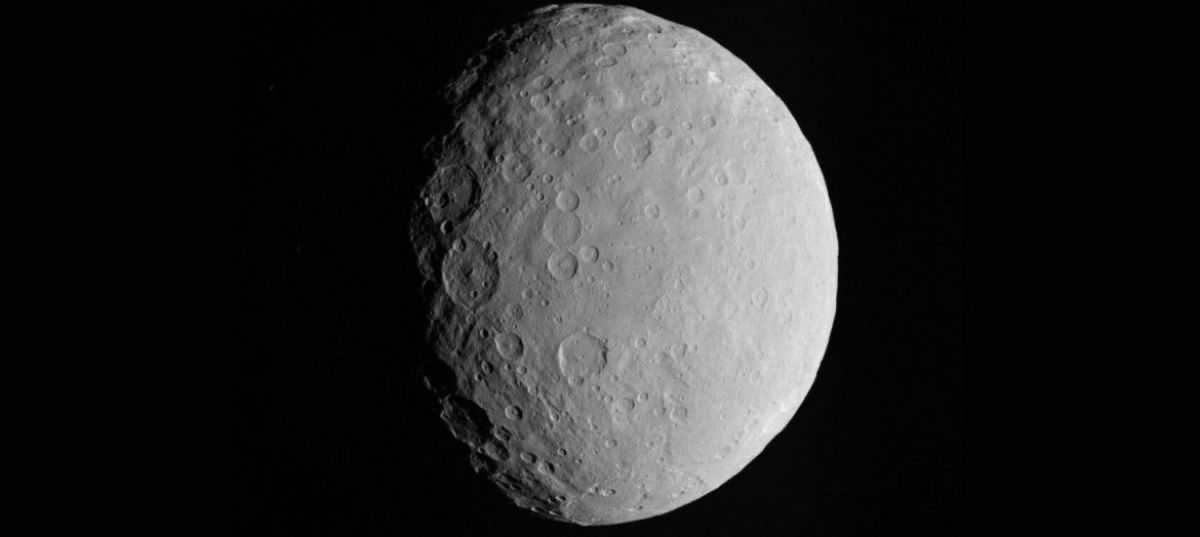
The dwarf planet Ceres is notable for its small size and its proximity to the Sun. It is a member of the well-known asteroid belt.
Discovery and Exploration
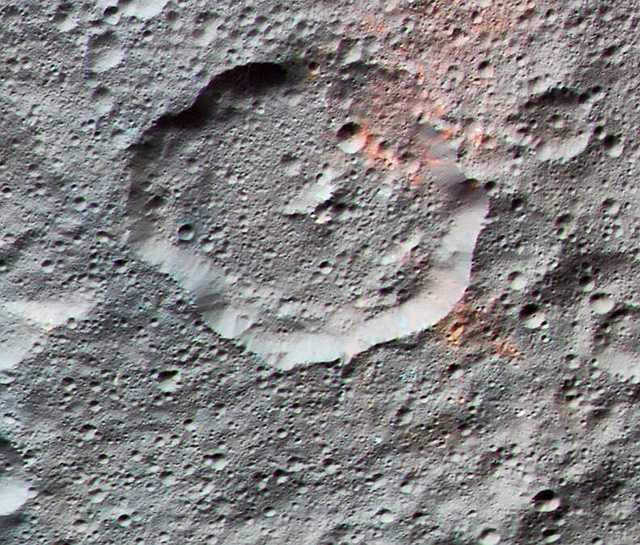
After its discovery, Ceres was not even classified as a dwarf planet. Giuseppe Piazzi, the man who first spotted it, initially thought it was a comet, but upon further examination, he changed his opinion.
Image of the dwarf planet Ceres
Until the mid-2010s, Ceres was only observed through telescopes. These observations revealed the presence of water vapor on its surface. The renowned Curiosity rover even managed to capture images of the dwarf planet from the Martian surface, but more information was still needed.
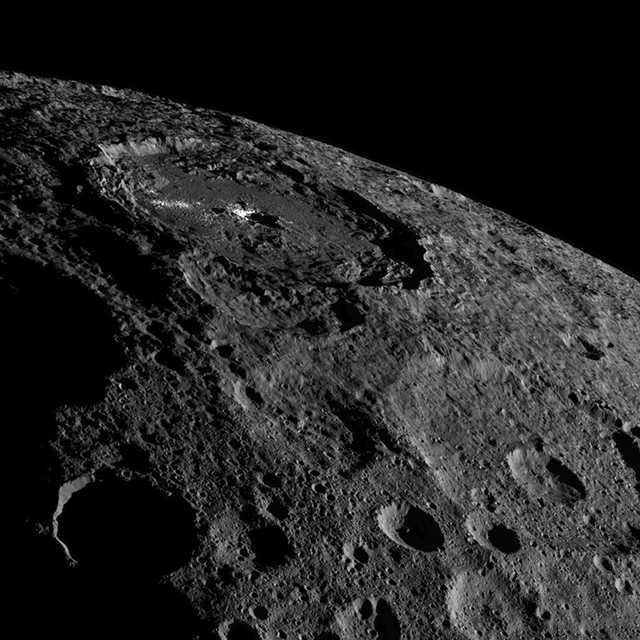

In the year of 2015, the Dawn spacecraft was dispatched to Ceres, where it managed to capture more intricate images of the dwarf planet. These images unveiled the presence of sodium carbonate formations on the planet’s surface, offering a closer look at its unique landscape and distinct features.
Distinctive Features of Ceres
The dwarf planet possesses a mass of 9.4 * 10 20 kg and a typical diameter of 950 km. It should be noted that the planet’s shape is not perfectly spherical.
Here are the remaining attributes:
- Average density – 2.2 g/cc.
- Surface area – 2.9 million square kilometers.
- Free-fall acceleration near the equator measures 0.27 m/s 2 .
Ceres, despite being a relatively large object, is significantly lighter than our planet, weighing in at six thousand times less. Positioned at a distance of 414,000,000,000 kilometers from our star, it holds the title for the closest dwarf planet to the Sun. Its orbit around the Sun takes approximately 4.5 Earth years to complete, while it completes a full rotation on its axis in just about 9 hours. Not only is Ceres in close proximity to the Sun, but it is also relatively close to Earth, with a mere 264 million kilometers separating us. Situated within the asteroid belt, this dwarf planet exists without any natural satellites.
Ceres lacks a substantial atmosphere and instead possesses a meager layer of icy material resembling clay on its surface. Below this surface layer lies the mantle, composed of ice, while at the center resides a compact rocky core.
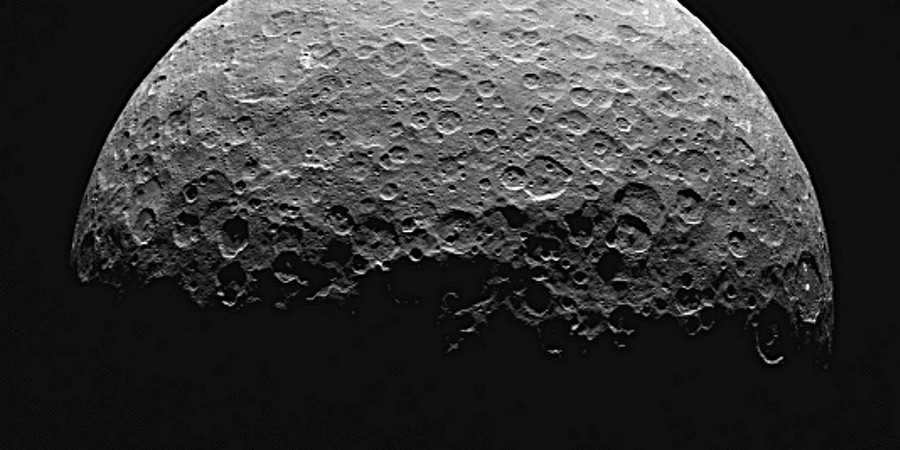
Ceres possesses a predominantly flat topography, although it does feature a number of craters. However, no exceptionally large craters have been identified thus far. It has been postulated that an icy volcano exists on the planet, as evidence of an elevated point has been detected during surveys. The average surface temperature on Ceres is a bone-chilling -106 degrees Celsius. As Ceres approaches our sun, it experiences a slight increase in temperature, occasionally reaching as “high” as -33 degrees.
Why is Ceres classified as a dwarf planet?
After its discovery, Ceres was initially believed to be a comet. However, further examination led to a change in classification. It was then classified as an asteroid for a significant period of time, along with other bodies in the asteroid belt. Finally, in 2006, Ceres was officially designated as a dwarf planet. This classification is based on several criteria, including its spherical shape and orbit around the Sun. Other dwarf planets include Eris, Haumea, Makemake, and, of course, Pluto.
Interesting information about Ceres
- If Ceres had not been “upgraded”, it would still hold the title as the first discovered asteroid.
- You may have noticed that Ceres contains a significant amount of ice. This is indeed accurate, as ice makes up approximately one-quarter of its total mass.
- The white markings on the surface consist of sodium carbonate.
- Two chemical elements were simultaneously discovered and named after Ceres. One of them was later renamed palladium, while the other continues to be known as cerium.
- Ceres’ ice is composed of water. Therefore, in theory, it could be suitable for potential colonization. The ice could be used to extract oxygen and hydrogen, which could serve as respiratory support for humans and fuel for equipment. Additionally, there is speculation that mineral deposits may exist on Ceres.
- If you’re curious about the surface area of Ceres, it is approximately equivalent to the size of Argentina, perhaps slightly bigger.
Ceres, the smallest dwarf planet in the Solar System, is located in the asteroid belt and is the closest to the Sun. Italian astronomer Giuseppe Piazzi discovered Ceres in 1801 at the Palermo Astronomical Observatory. Initially, Ceres was considered a planet, but in 1802 it was reclassified as an asteroid. However, it continued to be regarded as a planet for several more decades. On August 24, 2006, the International Astronomical Union refined the definition of a planet, and Ceres was officially designated as a planet. Later that same day, during the IAU XXVI General Assembly, it was reclassified as a dwarf planet. Ceres is named after the ancient Roman goddess of fertility, Ceres.
Ceres, which has a diameter of approximately 950 km, is the dominant and largest body within the asteroid belt. It surpasses numerous significant moons of the colossal planets in terms of size and encompasses nearly a third (32%) of the belt’s total mass. Unlike most small celestial objects that possess an irregular shape due to feeble gravity, Ceres boasts a spherical form. Judging by its density, Ceres is composed of 20-30% water ice. It is presumed that its interior is differentiated into a rocky core and an icy mantle. In addition to ice, the surface of Ceres contains various hydrated substances and carbonates (such as dolomite and siderite), as well as clay minerals rich in iron. The Herschel telescope detected water vapor surrounding this dwarf planet in 2014.
From the perspective of Earth, the visible light emitted by Ceres falls within the range of 6.7 to 9.3 stellar magnitude. This range is not sufficient for the human eye to perceive Ceres as a distinct object. In order to study both Vesta (2011-2012) and Ceres, NASA launched the Dawn probe on September 27, 2007. The probe successfully entered orbit around Ceres on March 6, 2015.
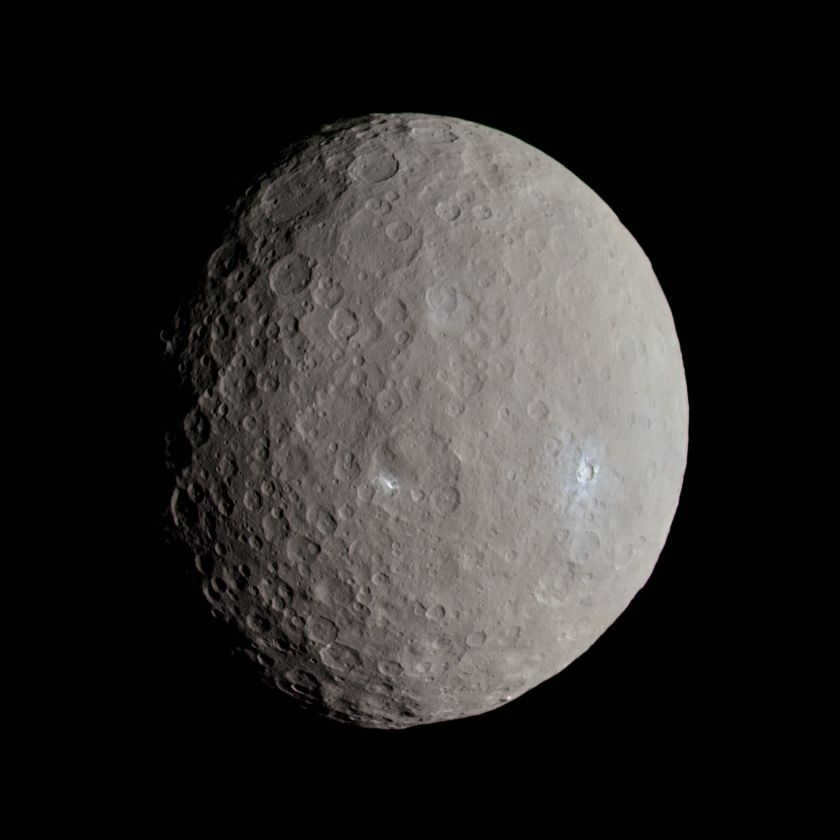
Exploration
The initial proposal of the existence of an unknown planet between the orbits of Mars and Jupiter was put forth by Johann Elert Bode in 1772. Bode’s speculation was based on the Titius-Bode rule, which was first introduced in 1766 by the German astronomer and mathematician Johann Titius. Titius claimed to have identified a regular pattern in the radii of the orbits of the known planets at that time. The confirmation of this rule came with the discovery of Uranus by William Herschel in 1781. This discovery prompted the search for a planet located 2.8 astronomical units (a.u.) away from the Sun, which is the distance between the orbits of Mars and Jupiter. To carry out this search, a group of 24 astronomers known as the “Celestial Guard” was formed in 1800, under the leadership of von Zach. These astronomers conducted round-the-clock observations using some of the most advanced telescopes of the era. While they did not find Ceres, they did make the discovery of several other large asteroids.
Ceres was first spotted on the night of January 1, 1801 at the Palermo Astronomical Observatory by Italian astronomer Giuseppe Piazzi. Piazzi had been searching for what he believed to be the 87th star in Mr. La Caile’s Catalog of Zodiacal Stars, but instead found another celestial body. Initially, he mistook it for a comet. Piazzi observed Ceres a total of 24 times until his observations were interrupted by illness. On January 24, 1801, he announced his discovery to his colleagues Barnaba Oriani and Johann Bode, describing it as a comet. However, he also noted that its slow and consistent motion made him suspect it might be something else. In April of the same year, Piazzi sent his most comprehensive observations to Oriani, Bode, and Jérôme Lalande in Paris. These observations were later published in the September 1801 issue of Monatliche Correspondenz.
When the journal was published, the apparent position of Ceres had changed (primarily due to the Earth’s orbital motion), and other astronomers were unable to confirm Piazzi’s observations due to solar glare. Towards the end of the year, Ceres became observable once again, but determining its exact position was challenging after such a long time. Karl Friedrich Gauss, who was only 24 at the time, devised an efficient method specifically for calculating Ceres’ orbit. He aimed to find a way to determine the orbit’s elements based on three complete observations (if the time, direct ascent, and declination are known at three specific points in time). In just a few weeks, he computed the trajectory of Ceres and forwarded his findings to von Tsach. On December 31, 1801, Franz Xaver von Zach, along with Heinrich Olbers, definitively confirmed the discovery of Ceres.
Status
The status of Ceres has undergone multiple changes and has been a topic of controversy. Johann Ehlert Bode proposed that Ceres should be considered a “missing planet” positioned between Mars and Jupiter, approximately 419 million km (2.8 a. e.) away from the Sun. Ceres was even assigned a planetary symbol and was regarded as a planet for around fifty years, alongside Pallas, Juno, and Vesta, as documented in astronomical tables and literature.
Subsequently, additional objects were discovered within the Mars-Jupiter region, leading to the realization that Ceres was one of these objects. As early as 1802, William Herschel introduced the term “asteroid” (meaning star-like) to describe such bodies, stating, “They resemble small stars, as they are barely distinguishable from them, even when observed through high-quality telescopes.”
The discovery of Ceres marked a significant milestone as it became the inaugural asteroid to be identified.
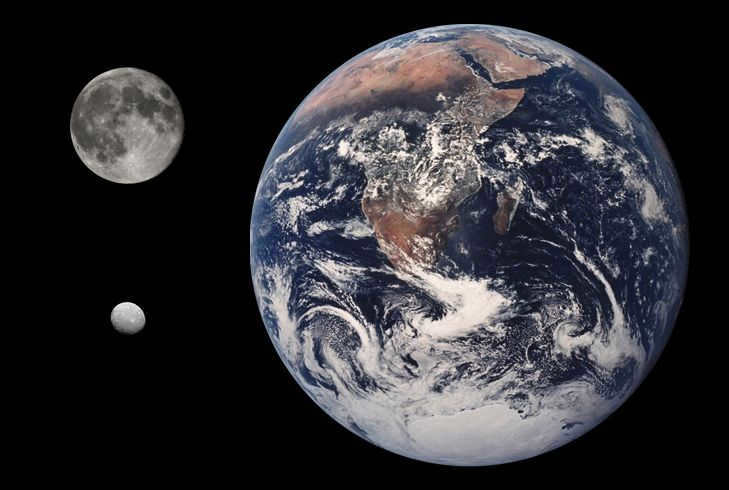
The conversation surrounding Pluto and the criteria for classifying planets has brought about the suggestion to reclassify Ceres as a planet. The International Astronomical Union has put forth a definition stating that a planet is an astral body that:
a) possesses enough mass to maintain hydrostatic equilibrium due to gravitational forces and has an almost perfectly circular form.
b) revolves around a star and is not a star or a moon of a planet.
The original proposal aimed to designate Ceres as the fifth planet in terms of its distance from the Sun. However, this resolution was not ultimately adopted. Instead, an alternative definition was put into effect on August 24, 2006. According to this new definition, in order to be considered a planet, a celestial body must meet certain criteria, including having a gravitational influence that clears its orbit of other objects. Unfortunately, Ceres does not meet this requirement, as it shares its orbit with thousands of other asteroids in the asteroid belt. Additionally, Ceres only makes up about a third of the total mass in its orbit. As a result, Ceres is now classified as a dwarf planet.
On June 11, 2008, the International Astronomical Union (IAU) established a new classification known as “plutoids” for a specific group of dwarf planets. This classification applies to dwarf planets that have a larger orbital radius than Neptune. Due to the challenges in determining the shape and relationship of these dwarf planets at such distances, it was decided to temporarily categorize them as objects with an absolute stellar magnitude brighter than +1 when observed from a distance of 1 astronomical unit (a. e.) from the Sun. Currently, Ceres is the only known dwarf planet that does not meet the criteria for being classified as a plutoid.
Orbit
Ceres’ path around the Sun is located in the asteroid belt, between the orbits of Mars and Jupiter. It bears a striking resemblance to a planet, with a slightly elongated shape (eccentricity 0.08) and a moderate inclination (10.6°) compared to Pluto (17°) and Mercury (7°). The major semi-axis of its orbit measures 2.76 astronomical units (a. u.), with perihelion and aphelion distances of 2.54 a. u. and 2.98 a. u. respectively. Ceres completes one revolution around the Sun in 4.6 Earth years. On average, it is located 2.77 a. u. away from the Sun (equivalent to 413.9 million km). The average distance between Ceres and Earth is roughly 263.8 million km. A day on Ceres lasts approximately 9 hours and 4 minutes.
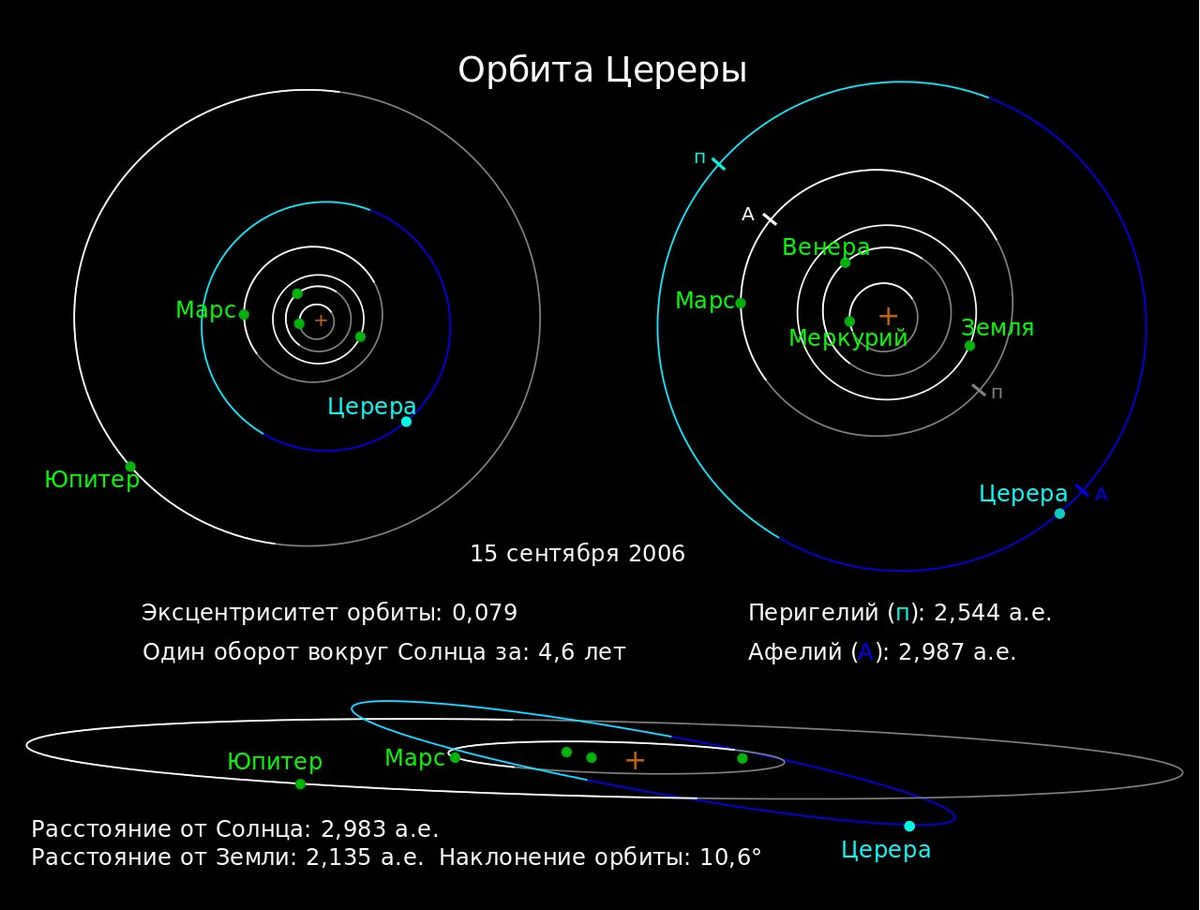
In previous times, Ceres was believed to be a part of the Hephyon family, one of the asteroid families. This assumption was based on the resemblance of its orbit to the orbits of other members of this family. However, the spectral characteristics of Ceres and these asteroids were distinct, suggesting that the similarity in orbits was merely coincidental. Furthermore, there was a hypothesis proposing the existence of a Ceres family consisting of 7 asteroids.
The graphic displays the pathway of Ceres (highlighted in blue) as it revolves around the Sun, along with the orbits of other planets (highlighted in white and gray). The lower region of the orbit, situated beneath the ecliptic, is depicted in a darker hue. The orange plus sign at the center represents the Sun. On the left-hand diagram, the position of Ceres’ orbit is shown situated between the orbits of Mars and Jupiter. The right-hand diagram illustrates the locations of the perihelion (q) and aphelion (Q) for both Ceres and Mars. Notably, Mars’ perihelion is situated on the opposite side of the Sun compared to Ceres’ perihelion and the perihelions of larger asteroids like (2) Pallada and (10) Hygeia. The last diagram at the bottom depicts the inclination of Ceres’ orbit in relation to the orbits of Mars and Jupiter.
In 2011, the staff of the Paris Observatory conducted computer modeling to analyze the behavior of the 8 planets of the solar system, along with Pluto, Ceres, the Moon, Pallada, Vesta, Irida, and Bamberg. The study revealed that Ceres and Vesta have orbits that are prone to instability, with a 0.2% probability of collision within one billion years.
According to Jacques Laskar in his publication Astronomy & Astrophysics, there is a possibility of a collision between Ceres and Vesta, occurring once every billion years with a 0.2% chance. Furthermore, Laskar notes that even with precise measurements from space missions, the movements of Ceres and Vesta will become unpredictable after 400,000 years. This research significantly hampers our ability to predict changes in Earth’s orbit.
Physical attributes
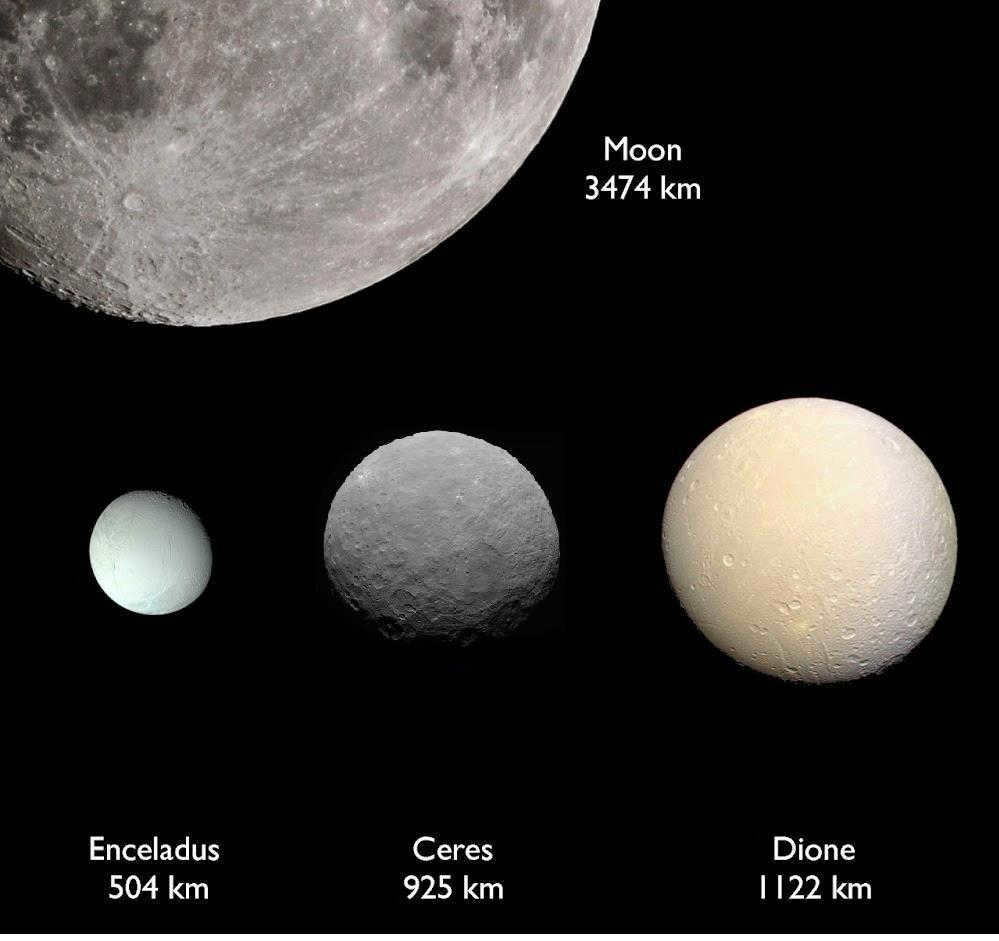
The Composition of Ceres
Unlike most other asteroids, Ceres underwent gravitational differentiation after it acquired a spherical shape. This process involved the movement of heavier rocks towards the central part of the dwarf planet, while lighter rocks formed the surface layer. As a result, Ceres developed a rocky core and a cryomantle made of water ice. The low density of Ceres (2.16 g/cm³) indicates that the mantle of the dwarf planet is approximately 100 km thick, making up 23-28% of its mass and 50% of its volume. Moreover, the mantle contains a significant amount of ice, with a volume of 200 million cubic kilometers, surpassing the amount of fresh water on Earth. These findings are supported by observations from the Keck Observatory in 2002 as well as evolutionary modeling. Furthermore, certain surface characteristics and the geological history of Ceres, such as its large distance from the Sun, which reduces solar radiation, suggest the presence of volatile substances in its interior.
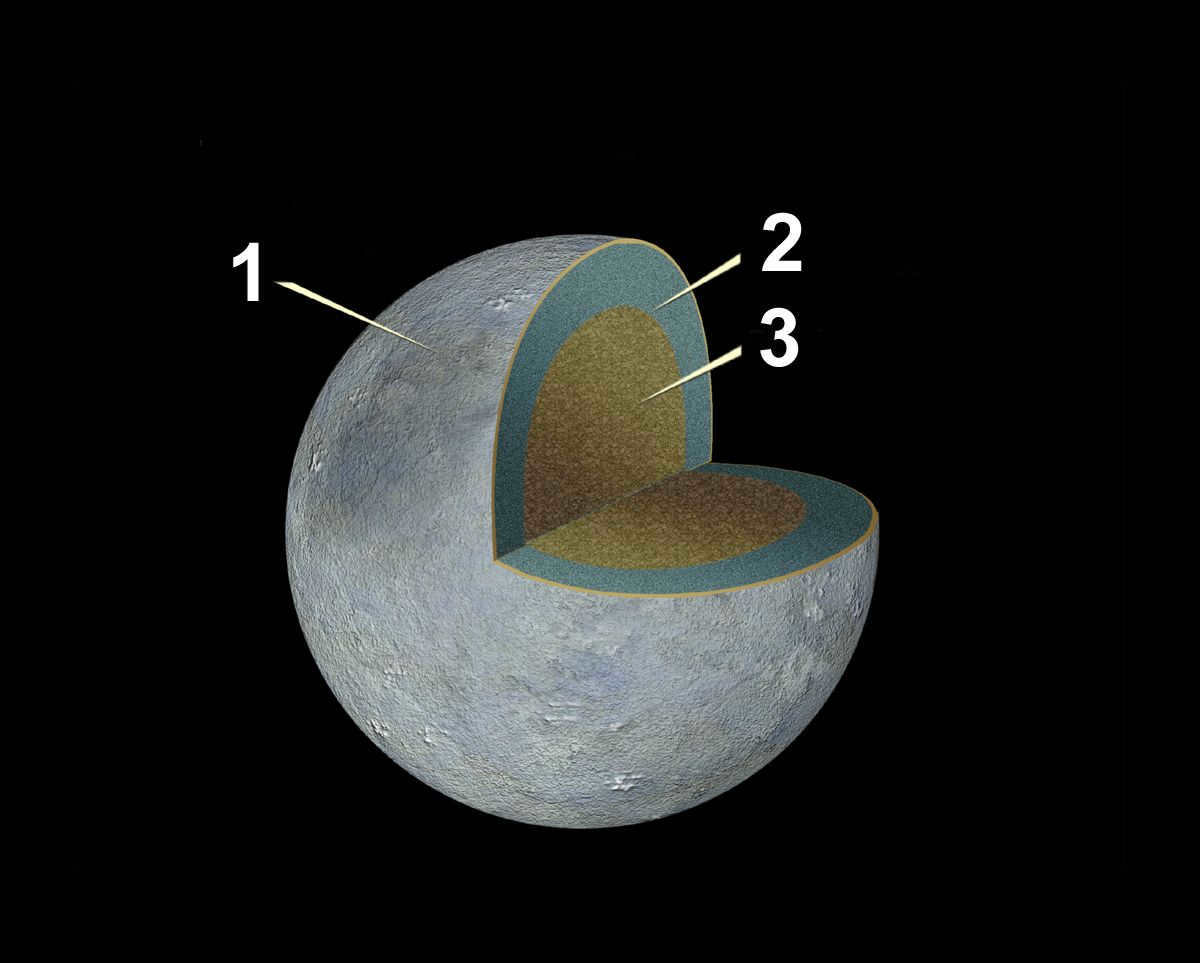
During its initial stages of development, it is likely that the core of Ceres experienced heating due to the process of radioactive decay. It is also possible that a portion of the outer icy layer was in a liquid state. Currently, it appears that a significant portion of the surface is still covered with ice or some form of icy regolith. Drawing parallels with the icy moons of Jupiter and Saturn, it can be speculated that under the influence of UV radiation from the Sun, some of the water molecules dissociate and contribute to the formation of a very dilute “atmosphere” on Ceres. Furthermore, the question of whether cryovolcanism has occurred on Ceres in the past or is currently occurring remains unanswered. The largest mountain on Ceres, Ahuna Mons, has been identified as an ice cryovolcano based on data collected by the Dawn spacecraft in 2016. This discovery suggests that the dwarf planet has been geologically active for at least the past billion years and potentially continues to be active in the present.
As of now, there have been no discoveries of any satellites on Ceres. Based on Hubble observations, it can be concluded that there are no satellites larger than 10-20 km in size.
Surface
Ceres appears as a dim 7th magnitude star in the sky of Earth. Its visible disk is very small, and only at the end of the 20th century, with the assistance of the orbiting telescope “Hubble,” were the first details observed. Several light and dark structures, potentially craters, can be distinguished on Ceres’ surface. By tracking these structures, scientists were able to accurately determine Ceres’ rotation period (9.07 hours) and the inclination of its rotation axis to the orbital plane (less than 4°). The brightest structure, shown in the figure on the right, was named “Piazzi” in honor of Ceres’ discoverer. It could be a crater that has exposed the icy mantle or even a cryovolcano. Infrared observations have revealed that the average surface temperature of Ceres is 167 K (-106 °C), which can reach 240 K (-33 °C) at perihelion. The radio telescope at Arecibo has also conducted several studies of Ceres in the radio wave range. Based on the nature of the reflections, it has been determined that Ceres’ surface is relatively smooth, likely due to the high elasticity of the icy mantle.
In 2014, the International Astronomical Union officially sanctioned two categories for designating features on the surface of Ceres: the titles of agricultural deities for craters, and the designations of agrarian celebrations for other features.
On July 13, 2015, the initial set of 17 names was ascribed to craters on Ceres. The particular crater housing the renowned luminous spot was christened Occator, in honor of the ancient Roman god associated with tilling the ground.
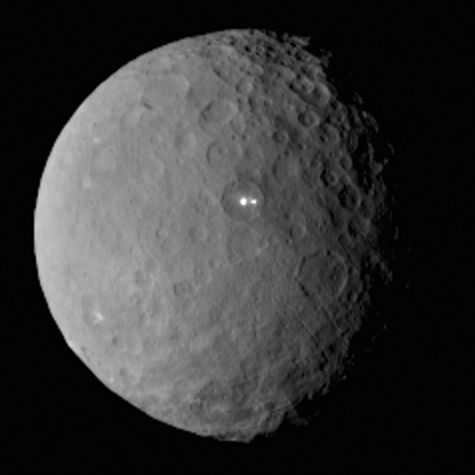
In 2015, the Dawn station collected spectra that revealed the absence of water but the presence of a hydroxyl OH band and a slightly weaker ammonium band. This suggests the existence of ammoniated clay, where water is chemically bound as hydroxyl. The presence of ammonia on Ceres remains unexplained, as its snowline is located well beyond Ceres’ orbit.
Furthermore, analysis of crater distribution on Ceres’ surface, based on data from the Dawn spacecraft, suggests that there is a lower-than-expected number of large craters. This implies that the surface of Ceres is undergoing gradual changes.
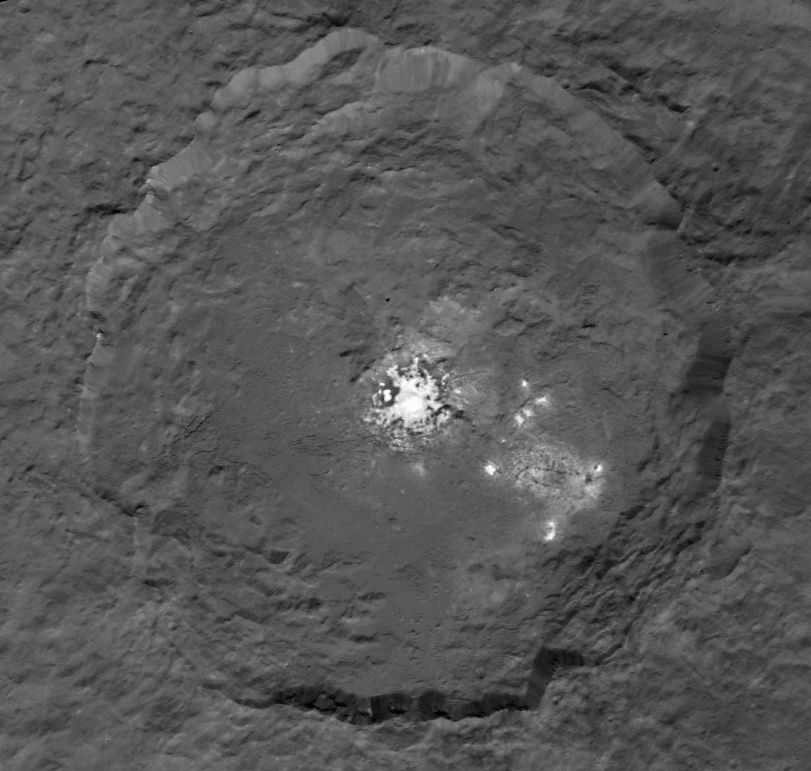
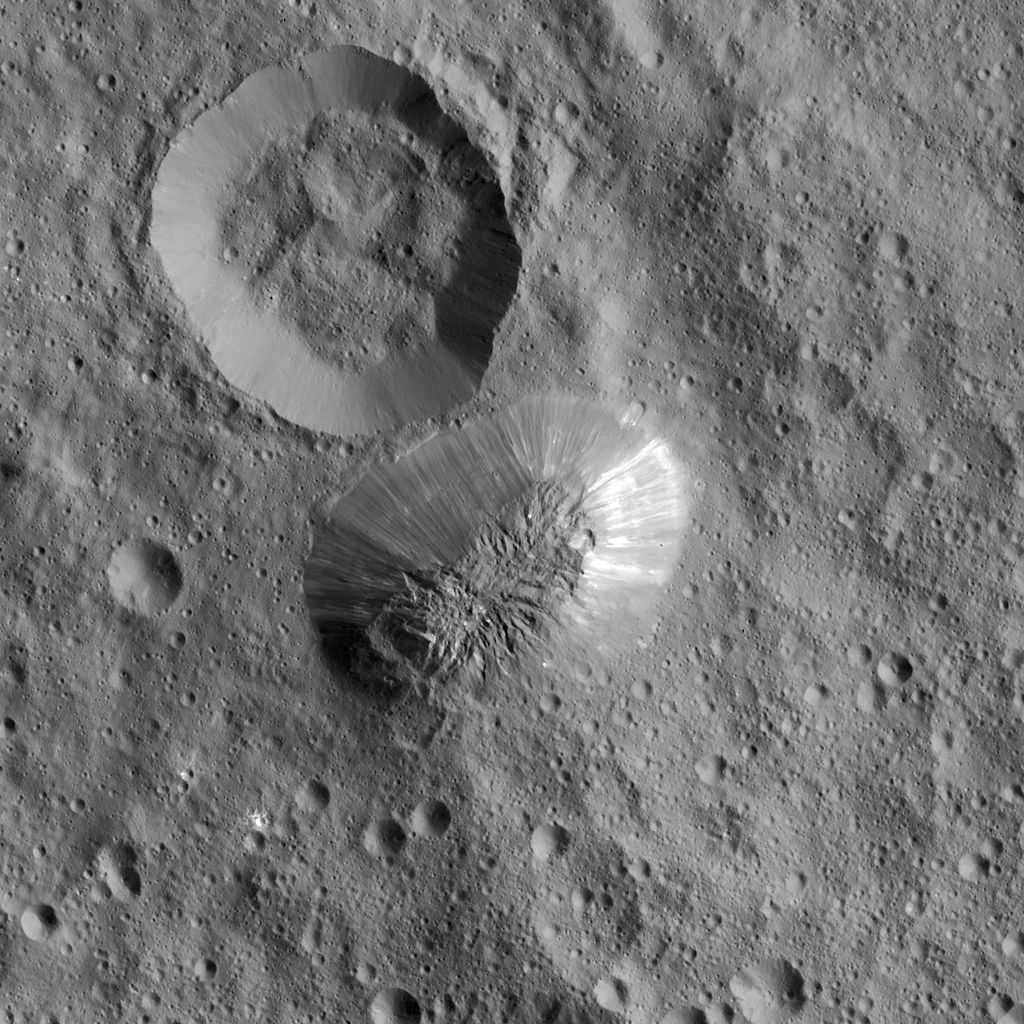
Further investigation
Until 2015, the only method for studying Ceres was through telescopic observations. Regular campaigns were carried out to observe Ceres’ star coverage, disturbances in the movement of neighboring asteroids, and Mars’ clarification of its mass.
In January 2014, it was reported that the Herschel infrared telescope detected water vapor clouds surrounding Ceres. This made Ceres the fourth celestial body in the Solar System to exhibit water activity, following Earth, Enceladus, and possibly Europa.
On April 20, 2014, the Curiosity rover captured the first-ever images of the asteroids Ceres and Vesta from the surface of Mars.
NASA released detailed images of the dwarf planet on February 18 and 25, 2015. These images revealed two bright white spots whose nature was initially unclear. In December 2015, it was determined that the spots were composed of hydrated magnesium sulfate. However, another group of astronomers, using a more accurate spectrograph, later concluded that the spots were actually made of sodium carbonate (soda) based on spectrum analysis.
On March 6, 2015, the spacecraft Dawn entered orbit around Ceres and conducted surveys for nearly 16 months.
On April 10, 2015, Dawn captured a series of images of the planet’s surface near the north pole from a distance of 33 thousand kilometers.
On May 16, 2015, Dawn obtained the highest quality image to date of the mysterious white spots on the surface of the dwarf planet Ceres.

